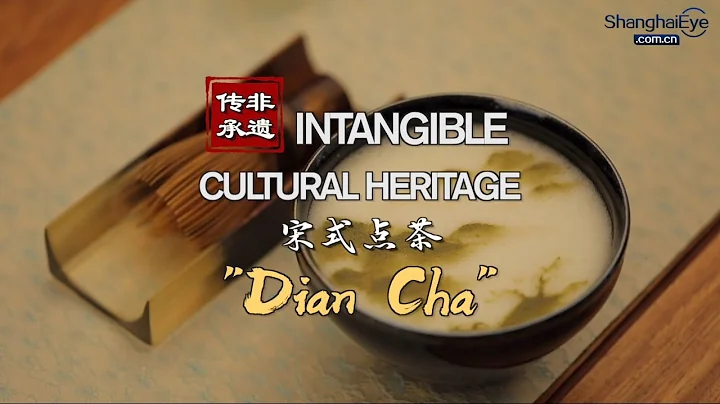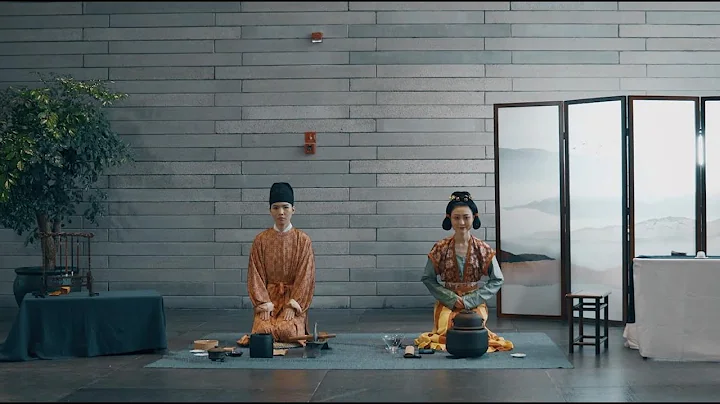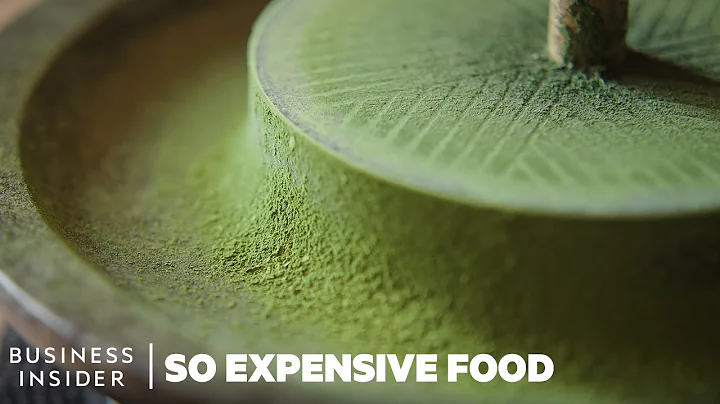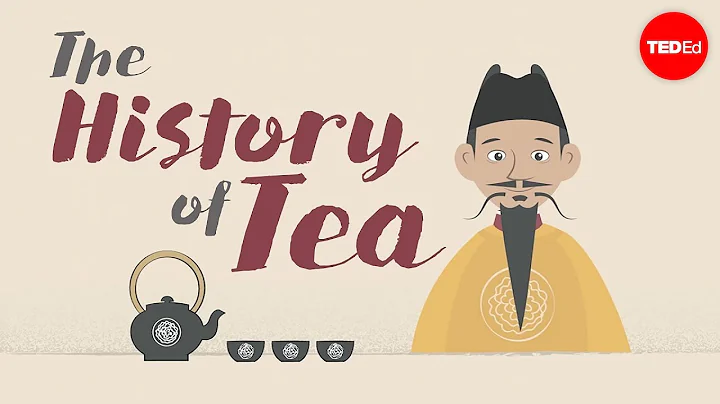
In the recently popular TV series " Meng Hua Lu ", Liu Yifei plays Zhao Pan'er, who runs a tea shop in the drama and is a skilled tea master. If we use the popular two-dimensional term, then it is: the "hexagonal warrior" of tea art and life.
Although the TV series did not specify the dynasty in which the story took place, with the appearance of Yan Shu in episode 9, it was confirmed that it was set as Song Dynasty . So the tea art displayed by Zhao Pan'er becomes reasonable. After all, the Song Dynasty was indeed the pinnacle of Chinese tea art. But unfortunately, the tea art reached its peak in the Song Dynasty but also faded away. After the Song Dynasty, the Chinese people's aesthetic appreciation of tea changed again. It's not so lively anymore.
The history of tea drinking among Chinese people can be said to have "emerged in the Tang Dynasty and flourished in the Song Dynasty". In the early Tang Dynasty and before, drinking tea was quite free and uninhibited. The tea at that time was often added with various auxiliary ingredients: fragrant green onions, spicy ginger, sweet dates, sour orange peels, as well as dogwood, mint, and salt, which were sour, sweet, bitter, and spicy. Nothing is impossible. The tea of the Tang Dynasty was close to the "Top Ten Great Tonic Soups". It was mostly in demand for its functions of quenching thirst, satisfying hunger, refreshing people and curing diseases. It was not until the tea sage Lu Yu wrote the "Tea Classic" that the Chinese tea ceremony finally had its own universe.

Tea making method - grind the tea leaves into powder, then take a small spoon to the tea cup, then pour boiling water into it, and use dazzling wrist skills to brew it. © Monodao
If we fast forward to the Song Dynasty, the method of making tea in the Tang Dynasty has become the method of making tea - the tea leaves that were originally put into boiling water are now finely ground into powder and then taken to the tea cup with a small spoon. Then add boiling water and use dazzling wrist skills to make it. The process of dashing created the crown jewel of tea art in the Song Dynasty, or in other words, the action of dashing was the Song people's interpretation of tea.
Cai Xiang of the Northern Song Dynasty ranked among the four masters of the Song Dynasty with his achievements in calligraphy. His poetry and political achievements are also worthy of mention. But to talk about his achievements in "founding a sect", we have to look at his "Tea Records" - the upper and lower two This piece, just a thousand words long, is one of the most important works on tea science after Lu Yu's "The Classic of Tea" and almost defined tea ordering in the Song Dynasty. In addition, the most popular tea in the Song Dynasty, "Little Dragon and Phoenix Tea", was also made by improving the predecessor's dragon and phoenix tea when he was a transshipment envoy in Fujian.
The core of the Song Dynasty tea-making method is "pointing": the tea powder that has gone through washing, roasting, grinding, and sifting (sieving) is placed in a warmed tea cup, and then cooked into crabs. Pour boiling water into the fish-eye sized blisters. First, mix the tea powder into a paste, which is called "paste". Then continue to pour boiling water and whisk with a tea whisk . The tea soup should be pure white, in order of green-white, off-white, and yellow-white. downgrade. At this moment, watch the fresh white tea soup dance and swirl in the cup like mist until it stops. Looking at the wall of the lamp, it is better to have no water marks, which is called " bites the lamp ".

In "Meng Hua Lu", a brush-shaped "tea spoon" is often used to order tea. © "Menghualu"
If there is a tea fight at this moment, the fight will be the color of the tea soup, and whether the cup can be bitten and how long it can be bitten. Behind the colors and shapes, tea fighting is about every detail, including washing, roasting, grinding, and roasting, as well as the ratio of tea powder to water, as well as the almost metaphysical control of the water temperature, and of course the wrist skills of the tea orderer. , the utensils used and the source of Song-style group tea.
The famous British historian Arnold J. Toynbee said: I would like to call the Song Dynasty the most suitable era for human life. The Chinese also regard the Song Dynasty as the spiritual homeland. The important reason why the Song Dynasty became a spiritual hometown is that both scholar-bureaucrats and common people could live a good life. Not to mention the picture of the prosperous times opened by "Along the River During the Qingming Festival ", people in the Song Dynasty drank tea, and everyone from temples to folk had their own cup.
Little Dragon Ball is a precious tribute. "Gold can be had, but tea cannot be obtained." It is difficult for ordinary ministers and concubines to see it. It is a great honor to receive the Dragon and Phoenix Ball Tea given by the emperor. Song Renzong and Song Huizong were both enthusiastic fans of this tea. The latter wrote a feature about it, and another important tea science treatise "Daguan Tea Theory" was born. Emperor Huizong of the Song Dynasty often ordered tea in person. In Cai Jing's "Yanfu Palace Qu Banquet", he said that the final effect was "like sparse stars and a pale moon" - Hey, this dragon's whiskers are so literate!

Tea fighting is about every detail, including washing, roasting, grinding, and grinding, as well as the ratio of tea powder to water, and the almost metaphysical control of the water temperature. © Pinterest
If you want to experience the good days of the Song Dynasty, Su Shi will never disappoint you. The tea poems he wrote have even become important clues for future generations to study the tea affairs of the Song Dynasty - "The Master asked me to pay attention to the delay, and I will give you the answer." "Tsunapachi Cake Tea", the general idea is that the above asked me why I didn't go to another place to take office? I said I would leave after giving me tea. This trend spread to the people and became more lively. "Fu tea is used by the people, which is equivalent to rice and salt. It cannot be used up in a day." The core elements of Chinese life, "tea, rice, oil, salt, sauce, vinegar, tea" that we are more familiar with, have already been mentioned by Wang Anshi in "The Law of Tea".
Although the literati of the Song Dynasty emphasized that "burning incense, ordering tea, hanging pictures and arranging flowers, and other idle things, and not being violent to the family", the tea ceremony was included in the four elegant ways of literati, in an attempt to prevent the common people from getting involved. But anyone who has experienced " Tokyo Menghualu " Yoshimitsu Katayu knows that the attitude of the people of the Song Dynasty towards this was roughly: I want it. Now in the collection of Taipei National Palace Museum , Southern Song Dynasty Liu Songnian's "Mingyuan Gambling Market" is a folk painting "just for fun". The paintings are all traders and lackeys. In the dense and dense composition, each character Immersed in tea, whether tasting or ordering, savoring or watching, the viewer can almost hear the admiration after taking a sip of tea. Looking at this painting, I can vaguely see a group of people on the street today who have finally lined up for the seasonal milk tea and are busy taking selfies. This is a conversation that spans history, especially in China.
Another manifestation of the unanimous love for tea is that teahouses were everywhere in the Song Dynasty. " Meng Liang Lu " lists many teahouse names with Internet celebrity potential. My three favorites are: Zhu Skull Teahouse - Beauty Skeleton, which is probably a teahouse dedicated to people with melancholy; Yiku Ghost Tea House - This is very real, it feels like having friends together; Huang Jianzui Cuqiu Tea House - Could this be opened by the famous sports commentator Huang Jianxiang of the Song Dynasty? Of course, the above explanations are all made up by me, but it is this fierce vitality that makes us feel unfamiliar when we look back at the Song Dynasty. Instead, we can feel that there is a continuous breath of fireworks that has never been cut off.

Song Dynasty Liu Songyuan's "Mingyuan Gambling Market Map". The earliest work in the history of Chinese tea painting that reflects folk tea fighting.
The TV series "Meng Hua Lu" devoted an entire episode to depicting "Tea Baixi". Tea Baixi, also known as Shui Danqing, Tang Opera, and Tea Opera. Tao Gu recorded in "Cu Ming Lu": "Baica Opera... In recent times, there are people who lower the soup to move daggers, and use special tricks to make the soup pattern and water veins The objects are like animals, insects, fish, flowers, and plants. They are delicate and picturesque, but they will disappear in a moment. "Using water to show off the skill of painting on the ordered tea soup will naturally be associated with modern coffee latte art. But just like the relationship between Cuju and football, Chabaixi should not be compared with lahua. It is just a subtle and lively attempt by the Song people to balance life and creation. However, in 2017, the tea show was included in the intangible cultural heritage of Fujian Province. It is really questionable. Is a tea show that has only been reproduced for more than ten years really not modern people's fantasy of history and the pursuit of false fame?
In addition, the tea soup that shows the art of tea play is usually not drunk, which seems to deviate slightly from the tea ceremony. But isn't this just the world-famous Song Dynasty? It's just for fun. Li Qingzhao mentioned tea sharing in many words, such as "burning incense and incense sleeves, living fire to share tea", which reminds me of the famous drinking scenes in the female poet's other masterpieces. Hey, isn't this the Song Dynasty version of early C Late A? (C = tea) ?

Cha Baixi, also known as Shui Danqing, Tang Opera and Tea Opera.© Pu Su
In addition to tea games, people in the Song Dynasty also played with tea sets. As mentioned above, pure white tea soup is the top grade. In order to appreciate this mist-like milky tea soup, people in the Song Dynasty promoted the teacup with rich black glaze as the top grade, which is most suitable for the ethereal and light pure white tea soup. All the utensils for preparing this cup of tea also appeared in groups. In the writings of Shen An of the Song Dynasty, 12 common tea-ordering props were called " Mr. Twelve ", and they were respectively assigned personalities (and also had official positions) ! It feels like something will be released in the next second - Cha Zhuan, who is known as Deputy Commander Zhu, is most likely a young general with a tiger's back and a wasp's waist. A golden gun makes it airtight. On the pitch-black battlefield built by Jianzhan Several times in and out, the sky is blue and the moon is white. Soup bottle (kettle) is Tang Tidian, a virtuous old man. Without his guidance and guidance, there would be no battlefield for the general, Deputy Commander Zhu. People in the Song Dynasty believed that the tea whisk was made of gold, which was heavy and tough. It was easy to whip out beautiful foam when ordering tea. Isn't this a shining young man? The soup bottle is made of silver, and with the gurgling sound effect, he is really an old man who is always giving out instructions.
Probably there was so much to eat in the Song Dynasty that it failed to form a tea snack and tea system. I asked "Encyclopedia of Life in the Song Dynasty" Su Dongpo for help. When he drank tea, he planned to pair it with loquat and bayberry. "The tea came out empty, but the tangerine and bayberry were still sour." Unfortunately, it was not sweet enough. Either the guests were too important and the food was not served in the end. But in the many tea poems he wrote, drinking tea is generally a clear drink, "Drinking clear tea, admiring the clear scenery, and having a happy conversation." Tea is paired with scenery and friends, which is indeed the taste of literati.
I carefully looked at several Song Dynasty paintings with tea and tea-drinking scenes. There were elegant gatherings of nobles and the excitement of the market. But apart from the dishes at the banquet, most of the parts involving tea showed the tea itself. Thinking about it, with exquisite utensils and wonderful tea, there seems to be no need for icing on the cake.

A sumptuous banquet on the scroll of the Northern Song Dynasty. © Chinese Historical Review
But if I could walk on the streets of the Song Dynasty and drink a bowl of tea, I would never miss the various foods that can be paired with tea. Take the article "Zhouqiao Night Market" in Volume 2 of "Tokyo Menghualu" Let’s name the summer snacks mentioned here: ice and snow cold yuanzi, crystal horn, raw water-filled papaya, medicinal papaya, chicken head and sugar, mung beans, licorice ice and snow cold water, lychee paste, broad mustard Melon, pickles, apricot slices, plum ginger, lettuce shoots, mustard melon, fine stuffed ravioli, fragrant seeds, sugared lychee, black plum, perilla paste, gold-threaded prune, citrus root , all stored in plum-red boxes.
There are sweet and salty, sour and spicy, and there are exquisite boxes to hold them. If you are holding a cup of tea in your hand, it is not easy to choose a poor family. How about a little of each, and you will be happy in the Song Dynasty. He is a bully who drinks a cup of tea but eats street snacks.
In addition to the Tea Baixi, the Song Dynasty Tuancha production was also restored by tea people.
This is of course worthy of gratification and encouragement, but understanding the tea ceremony of the Song Dynasty does not mean tracing back to the past. After the First World War in Yashan, the Song Dynasty fell. Before that, the iron hooves of the Yuan Dynasty had already swept across most of the world with a rougher way of drinking tea. Entering the Ming Dynasty, Zhu Yuanzhang, who advocated frugality, issued an edict to abolish the old custom of offering Tuancha as tribute in Fujian, and banned the production of Tuancha because it was difficult and costly to make Tuancha. From then on, the Chinese tea ceremony fully included making tea. The stage of tea drinking is closer to the modern Chinese way of drinking tea.

Yuangu refreshments with ancient characteristics.
If we try to replicate the Song Dynasty’s tea ordering in 2022 and try to revive the preparation of Tuancha, it is destined to be just a niche behavior in a small circle.Rather than trying to experience the tea ceremony of the Song Dynasty with confusion and nervousness, it is better to fully experience the tea flavor of the Song Dynasty - from the two sides of the Bianhe River in "Along the River During the Qingming Festival", from the rush of "Tokyo Meng Hua Lu" and "Meng Liang Lu" The name of the dish comes from the poems of Su Shi, Lu You, and Li Qingzhao. It is also preserved in the "Wenhui Picture" of the gathering of emperors and nobles and the "Mingyuan Gambling Market Picture" of the merchants and lackeys.
As long as we can still say "tea replaces wine" and as long as we still regard serving tea as an important ritual of hospitality, the tea spirit of the Song Dynasty will not be cut off. Appreciating the new milk tea products of major brands every year, isn’t it a tea ceremony for modern youth? Please remember the spiritual core of the Song people: "Enjoy to your heart's content, just play!"
So, as I said before, "After the Song Dynasty, the Chinese people's aesthetic appreciation of tea has never been so lively and fragrant." In this context, Here is a false proposition. What makes you lively and alive can only be your choice in life. If we regard Shen Nong's consumption of tea as the Big Bang of the tea universe, then the tea, tea events, and tea ceremonies you experience today are all stars born after the Big Bang. On this day when "firewood, rice, oil, salt, soy sauce, vinegar and tea" are still juxtaposed, the tea we drink and the food that goes with the tea are the light of the long-distance and bright star of the Song Dynasty that continues to arrive at this moment.
References:
"Historical portrayal of daily life - A glimpse of folk tea events in the Song Dynasty from the "Mingyuan Gambling Market Map"", Dang Beibei and Chang Lei (corresponding author)
"On the imitation of Song tea art to revive my country's traditional Song tea culture "Possibility", Qiu Mengrong
"Analysis of the Cultural Connotation of Tea Poems in the Song Dynasty", Hao Linlin
"The Tea Customs of the Song Dynasty and its Cultural Implications in Su Shi's Tea Poems", Liang Zhenming
"Why Tea Drinking Became a National Fashion in the Song Dynasty", Xiling
"Knowing China: The Basics of Chinese Tea", CITIC Publishing Group
"Tokyo Menghua Lu", Meng Yuanlao, Zhongzhou Ancient Books Publishing House, 2010
"Fengya Song, the Visible Civilization of the Song Dynasty", Wu Gou, Guangxi Normal University Publisher, 2018






















